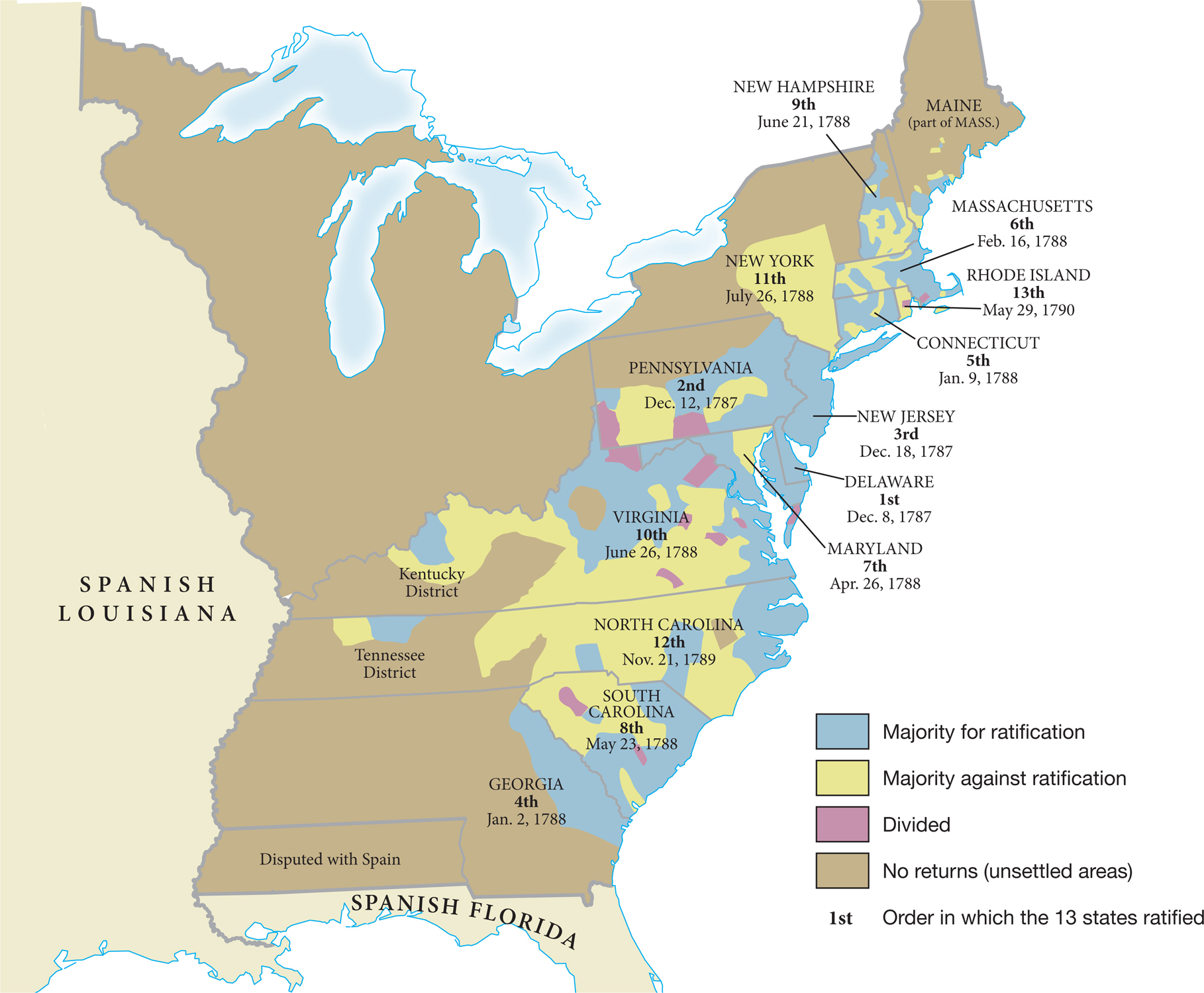The Federalists
Proponents of the Constitution moved swiftly into action. They first secured agreement from an uneasy confederation congress, to defer a vote and instead send the Constitution to the states for their consideration. The pro-
To gain momentum, the Federalists targeted the states most likely to ratify quickly. Delaware ratified in early December, before the Antifederalists had even begun to campaign. Pennsylvania, New Jersey, and Georgia followed within a month (Map 8.3). Delaware and New Jersey were small states surrounded by more powerful neighbors; a government that would regulate trade and set taxes according to population was an attractive proposition. Georgia sought the protection that a stronger national government would afford against hostile Indians and Spanish Florida to the south. “If a weak State with the Indians on its back and the Spaniards on its flank does not see the necessity of a General Government there must I think be wickedness or insanity in the way,” said Federalist George Washington.

Another three easy victories came in Connecticut, Maryland, and South Carolina. Again, merchants, lawyers, and urban artisans in general favored the new Constitution, as did large landowners and slaveholders. Antifederalists in these states tended to be rural, western, and noncommercial, men whose access to news was limited and whose participation in state government was tenuous.
Massachusetts was the first state to give the Federalists serious difficulty. The vote to select the ratification delegates decidedly favored the Antifederalists, whose strength lay in the western areas of the state, home to Shays’s Rebellion. One rural delegate from Worcester County voiced widely shared suspicions: “These lawyers and men of learning and money men that talk so finely, and gloss over matters so smoothly, to make us poor illiterate people swallow down the pill, expect to get into Congress themselves; they expect to be the managers of the Constitution and get all the power and all the money into their own hands, and then they will swallow up all us little folks.” But another western farmer said he knew “the worth of good government by the want of it,” a clear reference to the chaos of the Shaysite rebellion. He urged his fellow farmers to work with the elite leaders; “they are all embarked on the same cause with us, and we must swim or sink together. . . .
By May 1788, eight states had ratified; only one more was needed. North Carolina and Rhode Island were hopeless for the Federalist cause, and New Hampshire seemed nearly as bleak. More worrisome was the failure to win over the largest and most economically critical states, Virginia and New York.